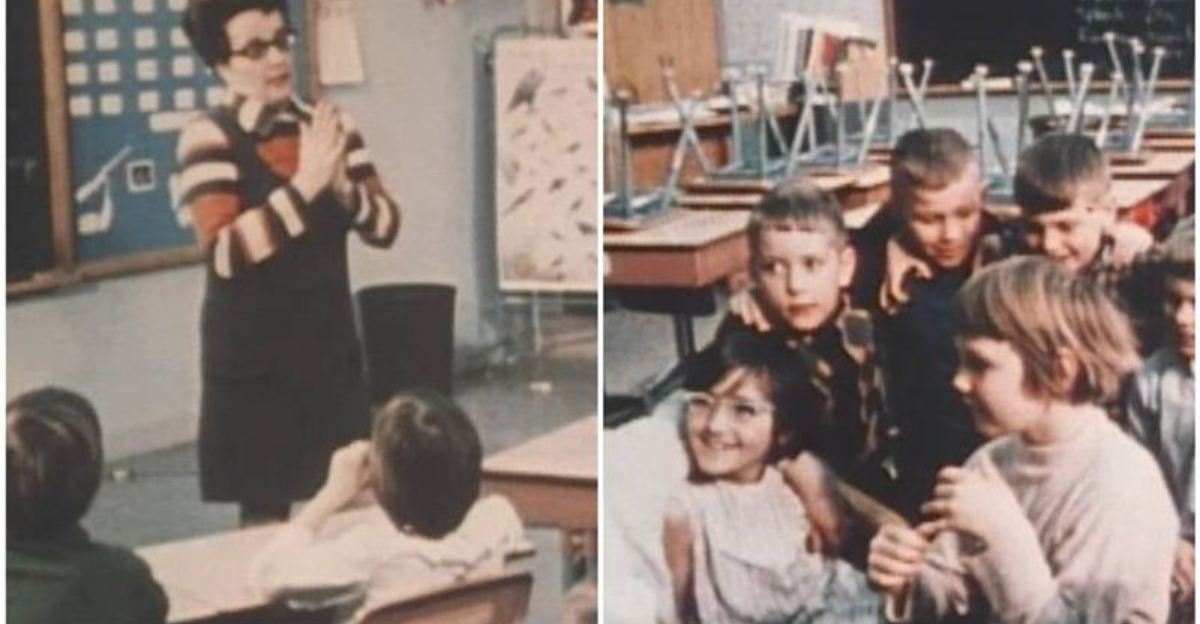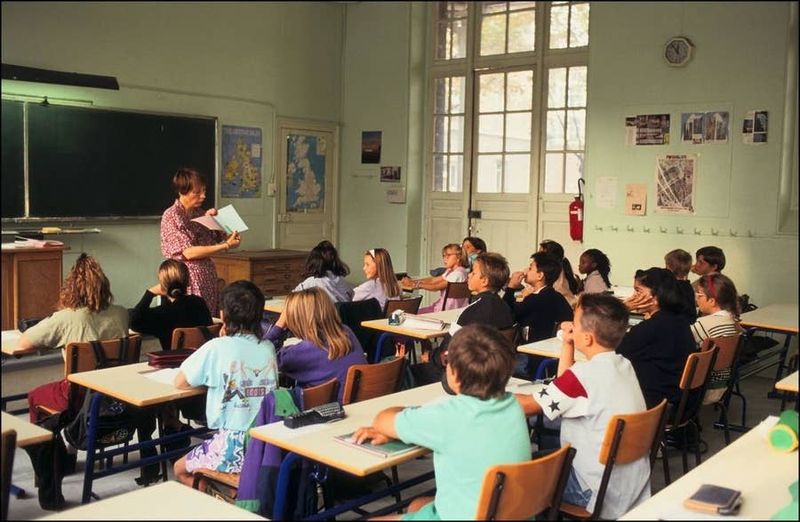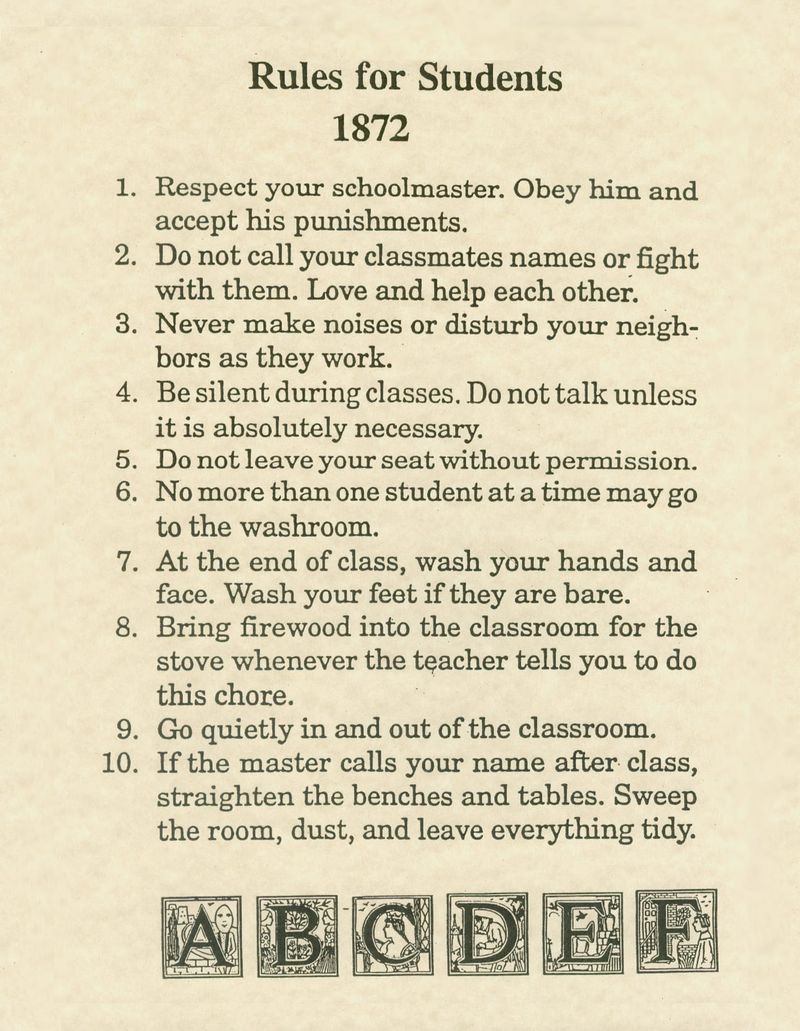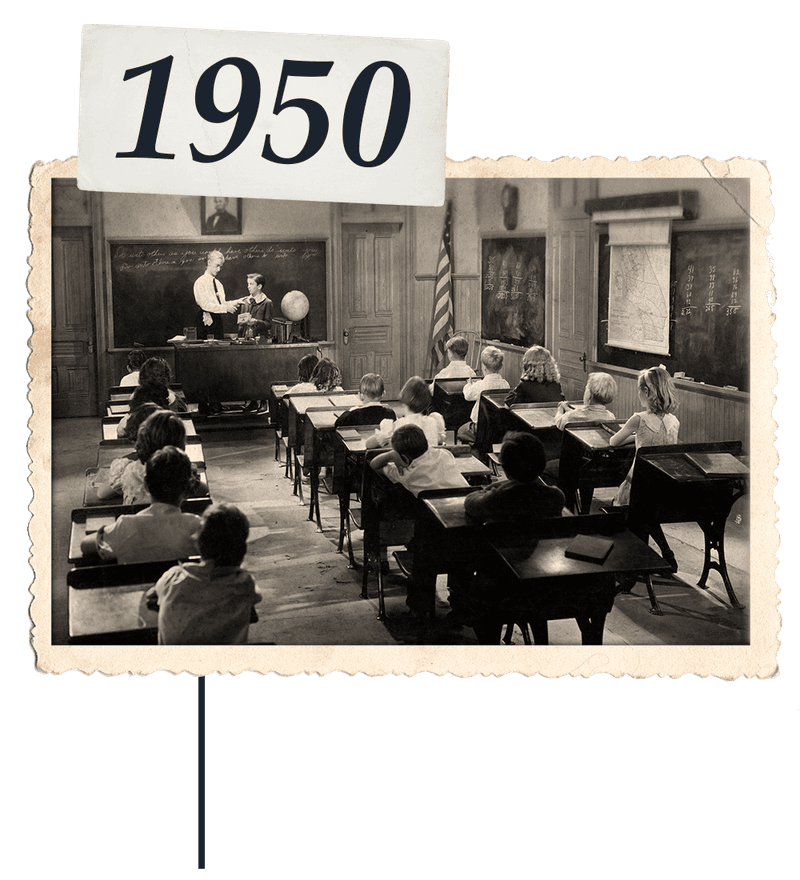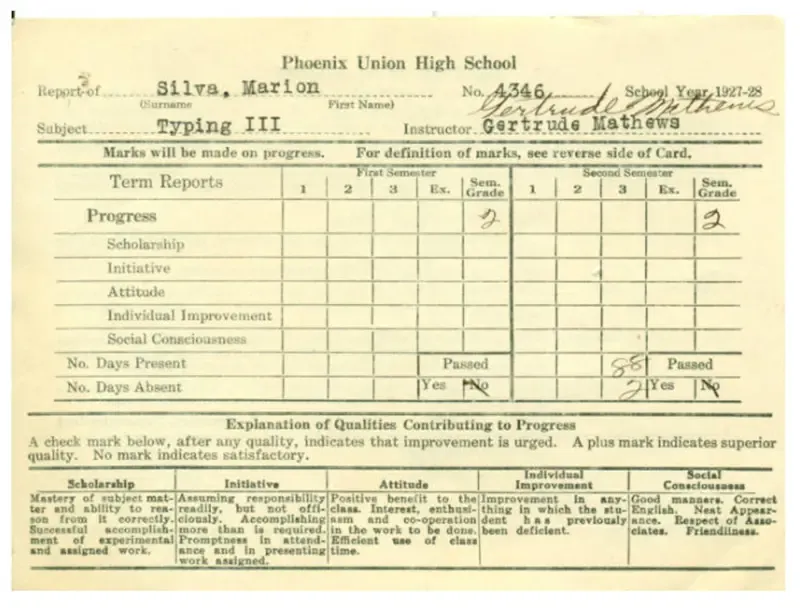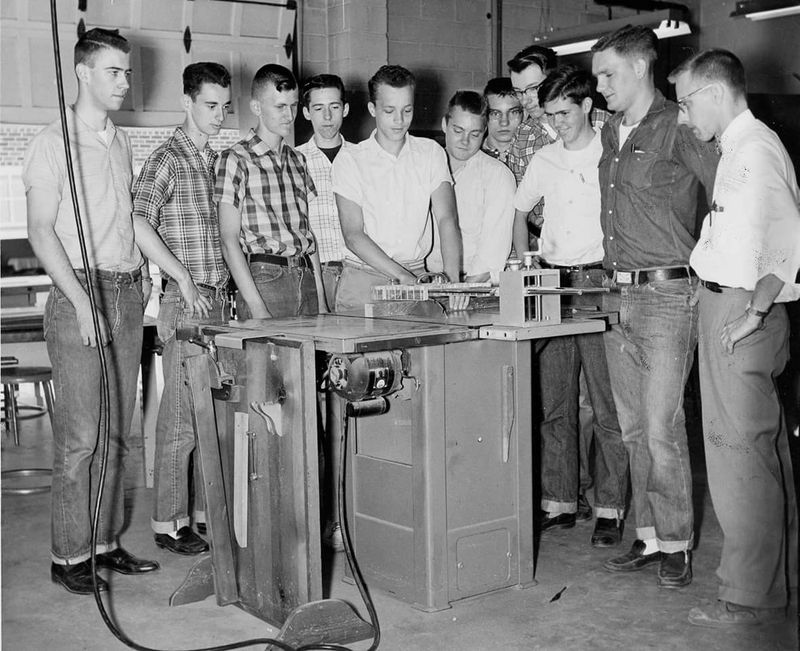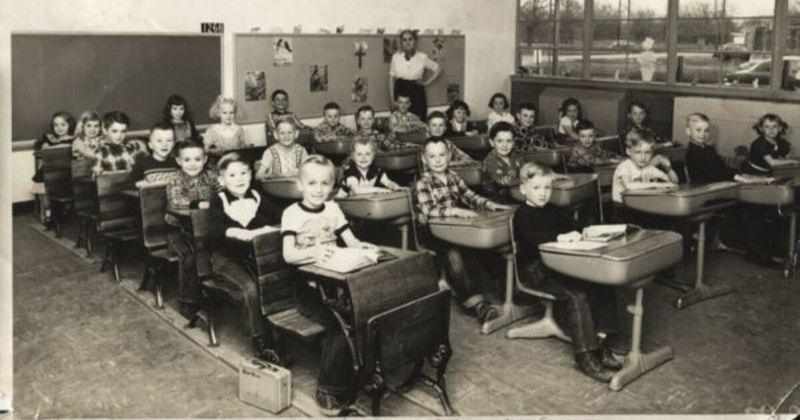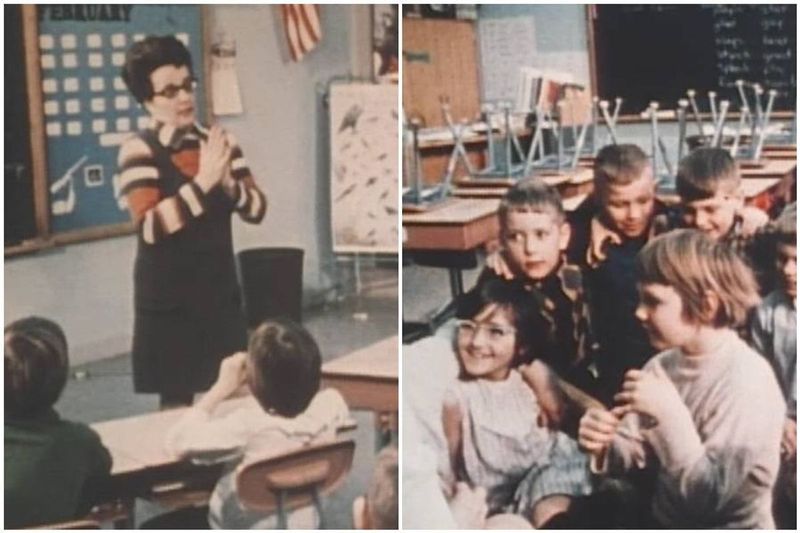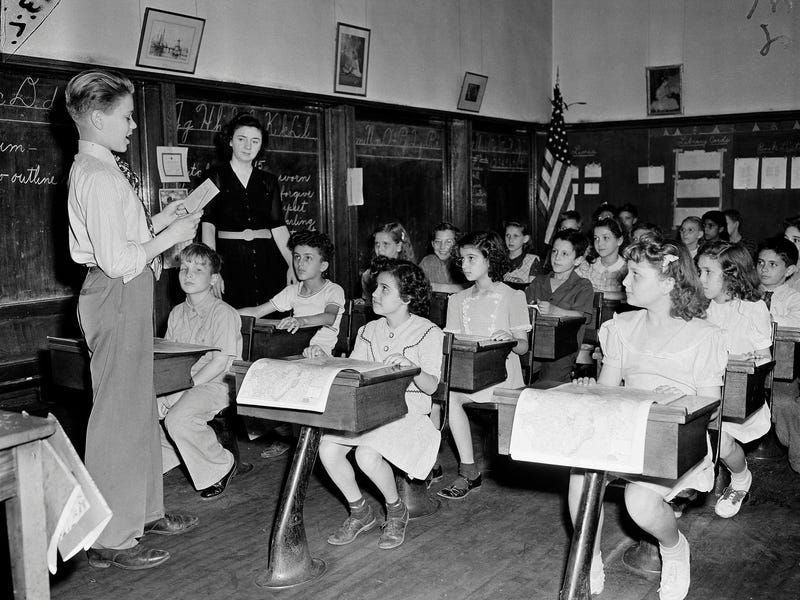Remember when school wasn’t a tech-filled maze of apps and constant assessments? Back in the day, education had a simplicity and purpose that seems lost in today’s academic landscape. The classroom experience focused on fundamental skills, practical knowledge, and clear expectations without the distractions we now take for granted. Let’s take a nostalgic journey through the hallways of yesterday’s schools, where common sense and life preparation took center stage.
1. Teachers Had Authority—and Respect
Walking into Ms. Johnson’s classroom meant business. Students straightened up, notebooks opened, and chatter ceased. No parent emails questioning homework assignments or demanding grade changes.
Teachers commanded respect through their knowledge and position, not through negotiation. When Mr. Thomas sent a note home, parents asked what you did wrong—not how the teacher had failed you.
This clear authority created structured environments where learning thrived. Kids understood boundaries, and the classroom hierarchy mirrored the real-world respect for expertise and experience that would serve them well beyond graduation day.
2. One Clear Set of Rules
Remember the simplicity? Rules hung on classroom walls in bold, unmistakable lettering: no running in halls, raise your hand to speak, respect others. Breaking rules had consistent consequences—no behavior apps or point systems needed.
Schools operated on principles everyone understood. The playground had boundaries, hallways had traffic patterns, and classroom expectations remained steady throughout the year.
This consistency taught more than obedience—it instilled a sense of order and predictability that helped kids feel secure. When expectations never shifted with the latest educational trend, students internalized standards that prepared them for workplace environments and social situations alike.
3. Distraction-Free Learning Environment
The loudest interruption came from the occasional paper airplane or whispered conversation—not notification pings or TikTok temptations. Eyes focused on chalkboards and textbooks instead of screens, allowing deeper concentration on single tasks.
Group work meant actually talking to classmates face-to-face. Passing notes required physical effort and risk, making communication more deliberate and thoughtful than today’s instant messaging.
Without digital distractions, students developed longer attention spans naturally. The brain had space to process information, make connections, and retain knowledge. Boredom wasn’t immediately escaped—it became the birthplace of daydreaming, creativity, and problem-solving that technology often short-circuits today.
4. Penmanship Was a Respected Art
Those lined handwriting worksheets weren’t just busywork—they developed fine motor skills and cognitive connections that typing can’t replicate. Hours spent perfecting loops and curves built patience and attention to detail.
Teachers graded handwriting alongside content. A beautifully formed cursive signature wasn’t just aesthetic; it represented personal identity and pride in presentation. Many classrooms displayed alphabet models above chalkboards as constant visual references.
Beyond practical application, handwriting instruction taught discipline through repetition. The satisfaction of mastering a difficult skill—turning chicken scratch into flowing script—built confidence that transferred to other learning challenges. Today’s keyboard-dependent students miss this fundamental developmental milestone.
5. Recess Was Sacred Outdoor Time
The playground bell triggered an exodus of energy and imagination. Kids raced outside regardless of weather—equipped with balls, jump ropes, and games passed down through generations of schoolchildren. No structured activities or teacher-led exercises required.
Social hierarchies formed and dissolved through kickball team selections and tetherball tournaments. Conflicts resolved organically, teaching negotiation skills without adult intervention for every disagreement.
Physical movement wasn’t scheduled as a brain break—it was recognized as fundamental to childhood development. Those 30 minutes of fresh air and freedom recharged bodies and minds for afternoon learning while building social bonds. The scraped knees and occasional playground disputes prepared kids for life’s rougher edges.
6. Textbooks Built to Last
Cracking open that hardcover science book released a distinctive smell of knowledge and possibility. Your name joined dozens of others on the checkout card, connecting you to a lineage of learners who’d studied the same material.
Textbooks contained complete information—not just snippets requiring internet searches to fill gaps. Illustrations and photographs were carefully selected to enhance understanding, not merely to break up text for short attention spans.
Those heavy backpacks built character and muscle simultaneously! The physical weight of knowledge was tangible. Students developed responsibility caring for books that would serve multiple classes over many years, understanding that resources had value and weren’t disposable like today’s often-unused digital subscriptions.
7. Straightforward Report Cards
Report card day carried weight—that single sheet of paper told the whole story. A row of letter grades and a few handwritten teacher comments revealed your academic standing without complicated rubrics or percentile rankings.
Parents understood exactly what an ‘A’ or ‘C’ meant without consulting online portals or deciphering standards-based jargon. Teacher comments like “needs to apply himself” or “pleasure to have in class” conveyed personality and effort beyond numerical assessment.
The quarterly rhythm created natural checkpoints for improvement. Students couldn’t hide behind daily grade updates or last-minute assignment submissions—report cards captured the full picture of a student’s performance, character, and growth over meaningful time periods.
8. Cafeteria Food Made From Scratch
Hair-netted lunch ladies arrived before dawn to prepare real food in actual kitchens. The aroma of fresh-baked rolls and homemade spaghetti sauce wafted through hallways, creating a Pavlovian response by fourth period.
Meals weren’t fancy but delivered proper nutrition without paragraph-long ingredient lists. Wednesday’s hamburger gravy over mashed potatoes might not win culinary awards, but it provided comfort and sustenance prepared by people who knew students by name.
Lunchtime fostered community as kids shared homemade treats and swapped sandwich halves. The brown paper bag from home often contained mom’s loving note alongside a PB&J. These simple meals nourished more than bodies—they created shared experiences and food memories that processed, pre-packaged options can’t replicate.
9. Life Skills in the Curriculum
Shop class taught boys AND girls to measure twice, cut once—creating birdhouses and bookends while learning tool safety. Home economics wasn’t considered sexist but essential: everyone learned to sew buttons, prepare balanced meals, and manage household budgets.
Practical math meant calculating tips, balancing checkbooks, and understanding interest rates—not just abstract concepts. These classes acknowledged that adulthood required tangible skills beyond academic knowledge.
Learning car maintenance basics, cooking fundamentals, and simple home repairs prepared students for independence. Schools recognized their responsibility extended beyond college preparation to life preparation. The pride in creating something useful—whether a wooden shelf or perfectly executed omelet—built confidence no standardized test could measure.
10. Tests Measured Understanding, Not Test-Taking
Assessments evaluated what you knew—not how well you eliminated wrong answers or followed testing strategies. Questions required written explanations and showed your work, not just selecting the correct bubble.
Teachers created their own tests based on what they actually taught in class. The variety of question formats—essays, problem-solving, short answer—allowed different learning styles to shine and demonstrated true comprehension.
Test preparation meant studying content, not practicing test formats for weeks. Schools measured success by knowledge retained and skills mastered, not by statistical comparisons to other districts. This authentic assessment approach recognized learning as individual growth rather than competitive performance, creating students who valued understanding over scoring.
11. Personal Accountability Was Expected
Forgot your homework? Face the music yourself—no parent email excuses or extended deadlines. Actions had natural consequences that built character and responsibility.
Classroom disagreements resulted in sincere apologies, not elaborate conflict resolution protocols. Students learned to own mistakes, make amends, and move forward without extensive intervention or documentation.
This straightforward accountability prepared kids for real-world expectations. When Johnny broke the classroom fish tank, he stayed after school to clean up and saved allowance for replacements—valuable lessons in personal responsibility. Such experiences taught that integrity meant doing the right thing even when uncomfortable, a principle that extended far beyond graduation.
12. Teachers Taught Their Passion
Mr. Rivera’s eyes lit up explaining Civil War battles—his enthusiasm infectious because he taught what he loved, not what a standardized curriculum dictated. Teachers followed academic guidelines but infused lessons with personal knowledge and creative approaches.
Classroom walls reflected teacher personalities: Ms. Baker’s room overflowed with literary quotes and student poetry, while Mr. Thompson displayed rock specimens collected during summer geology expeditions. These personal touches humanized education.
Educators weren’t data managers but knowledge sharers who adapted to student needs intuitively. When half the class struggled with fractions, Mrs. Abernathy brought in cookies to slice into equal parts—teaching through experience rather than prescribed methods. This freedom to teach authentically created memorable learning moments standardization often eliminates.
13. Education for Real-World Readiness
School prepared you for life’s practical challenges—not just college applications. Morning flag salutes and classroom responsibilities instilled civic values and work ethic that translated directly to adulthood.
Public speaking started with show-and-tell and built to research presentations, developing communication skills for any career path. Group projects mirrored workplace collaboration without technology intermediaries, teaching interpersonal dynamics through direct interaction.
The school experience itself—from navigating social hierarchies to meeting deadlines—developed resilience and adaptability. Whether headed to university or straight to work, graduates possessed fundamental tools for independence: time management, respect for authority, social competence, and basic knowledge. Education wasn’t measured by college acceptance rates but by producing capable citizens ready for whatever paths they chose.
